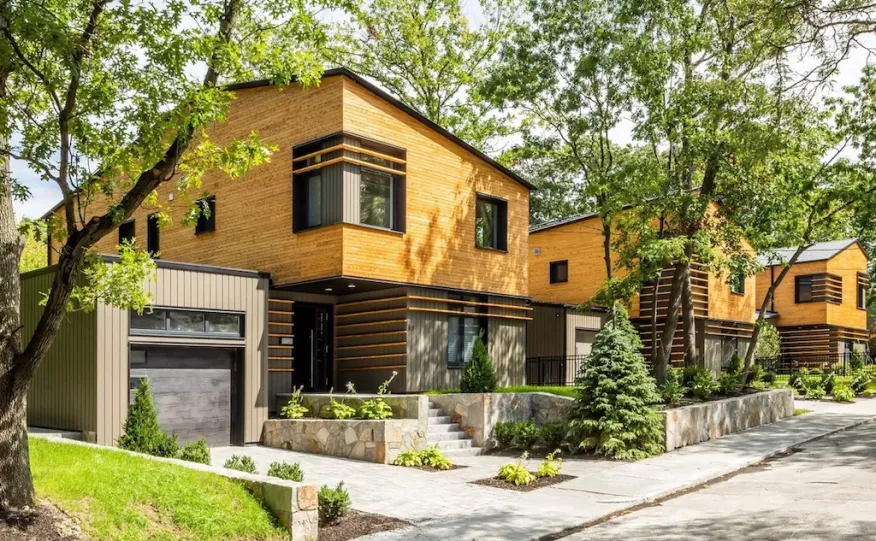In today’s world, embracing sustainability is no longer an option but a necessity. For homeowners and real estate developers, adopting an eco-friendly construction checklist is the cornerstone of creating environmentally responsible projects. This checklist not only guides you in reducing the environmental impact of your construction projects but also helps increase the energy efficiency of your buildings.

What is Eco-Friendly Construction?
Eco-friendly construction involves using processes and materials that are resource-efficient and environmentally responsible throughout a building’s life cycle. This includes design, construction, operation, maintenance, renovation, and deconstruction. The goal is to reduce overall carbon footprint and promote a healthier environment for the occupants and community.
Why is an Eco-Friendly Construction Checklist Important?
An eco-friendly construction checklist serves as a vital tool for ensuring that building projects align with sustainable practices. It helps in identifying materials and practices that minimize environmental impact and promote energy efficiency, ultimately leading to cost savings and a healthier lifestyle.
Key Elements of an Eco-Friendly Construction Checklist
1. Site Selection and Planning
Choosing the right site is crucial for sustainable building. Opt for locations that reduce the need for deforestation and are accessible to public transportation facilities.
If you’re interested in understanding how best practices can be applied, here is a helpful resource.
2. Sustainable Design
Integrate sustainability from the design stage by optimizing building orientation to take advantage of natural light and using insulation materials that lower energy consumption.
3. Energy-Efficient Solutions
Incorporate energy-efficient solutions such as LED lighting, solar panels, and energy star-rated appliances to minimize electricity use and promote a greener environment.
4. Eco-Friendly Building Materials
Select materials like bamboo, recycled metal, and reclaimed wood that are sustainable and have lower environmental impact.
5. Water Conservation
Implement water-saving practices such as rainwater harvesting, low-flow plumbing fixtures, and drought-resistant landscaping to reduce water usage.
6. Indoor Air Quality
Use non-toxic paints, sealants, and finishes that improve indoor air quality and promote a healthier living space.
7. Waste Reduction and Recycling
Plan for waste reduction by recycling construction materials and minimizing packaging waste.
8. Construction Management
Employ effective construction management techniques that reduce the carbon footprint, such as minimizing machine idle time and optimizing material transport.
Implementing the Checklist: Step by Step
To effectively use an eco-friendly construction checklist, follow these steps: begin by conducting an energy audit, assessing the site, designing sustainably, selecting eco-friendly materials, and incorporating innovative technologies.
For a detailed guide on starting your sustainable building project, visit this step-by-step guide.
Real-Life Examples of Eco-Friendly Construction
Many notable buildings around the world have set benchmarks in sustainable construction, such as The Edge in Amsterdam, recognized for its energy efficiency and smart building technology.
Barbara House
An example of a green residential construction project, built with high-quality sustainable materials and incorporates rainwater harvesting.
Challenges in Implementing Eco-Friendly Construction
Despite its benefits, implementing eco-friendly construction comes with challenges like increased initial costs, sourcing sustainable materials, and finding skilled labor.
Overcoming Challenges
These challenges can be addressed by planning meticulously, collaborating with experienced professionals, and taking advantage of government incentives for green buildings.
The Future of Eco-Friendly Construction
The future is bright for sustainable building as technology advances, making eco-friendly construction more accessible and cost-effective. Embracing smart building technologies will play a critical role in this sector’s evolution.
Technological Trends
Innovations in renewable energy, building automation, and sustainable materials will pave the way for more resilient and energy-efficient structures.
For more on technological trends in green construction, visit this guide.
Conclusion
Utilizing an eco-friendly construction checklist is an imperative step towards creating sustainable and high-performance buildings. By implementing these practices, you contribute to a healthier planet and an improved quality of life for generations to come.
Discover more about what constitutes green construction through this external link.

FAQs
What is an eco-friendly construction checklist?
An eco-friendly construction checklist is a guide that outlines practices and materials for building projects that aim to reduce environmental impact.
How can I start building green?
Begin by planning sustainably, choosing eco-friendly materials, and consulting experts to incorporate energy-efficient technologies.
Are there cost benefits to sustainable construction?
Yes, while initial investments might be higher, the long-term savings on energy and water bills, along with increased property value, present significant cost benefits.
This article contains affiliate links. We may earn a commission at no extra cost to you.



